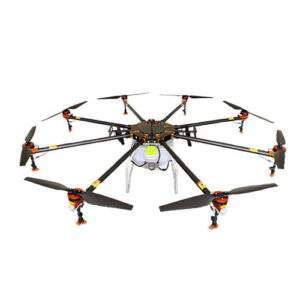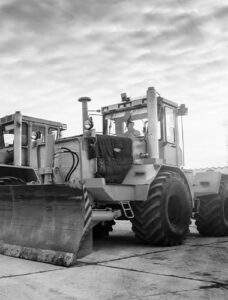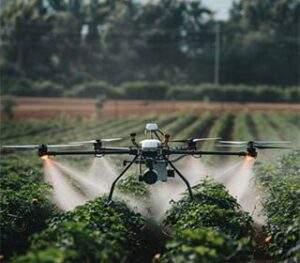How Chinese Tractors are Transforming Small-Scale Farming
Introduction
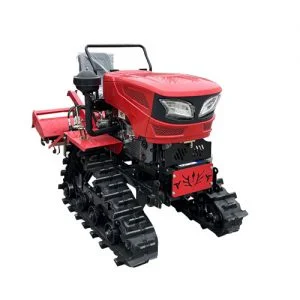
In recent years, the landscape of small-scale farming has been dramatically reshaped by the introduction of Chinese tractors. These machines have revolutionized agricultural practices, making farming more efficient, affordable, and accessible. This blog delves into the impact of Chinese tractors on small-scale farming, examining their features, affordability, and contributions to sustainability. As the backbone of agricultural innovation in many rural areas, these tractors are helping farmers increase productivity while promoting sustainable practices.
The Rise of Chinese Tractors in Agriculture
A Brief History of Chinese Tractors
The journey of Chinese tractors began in the mid-20th century when China sought to modernize its agriculture. The Chinese government recognized that mechanization was essential for improving agricultural efficiency and food security. By the 1990s, local manufacturers began producing affordable tractors designed specifically for small-scale farmers. This initiative not only provided essential equipment but also led to an explosion in tractor adoption among rural communities. The impact was profound, as it laid the groundwork for a new era of agricultural productivity that transformed farming methods and livelihoods.
Key Features of Chinese Tractors
Chinese tractors are designed with the small-scale farmer in mind. They come equipped with various features that cater to the unique challenges faced by farmers. Some of their notable characteristics include:
- Compact Size: These tractors are typically smaller and more maneuverable, making them ideal for small fields, narrow lanes, and challenging terrains. This compact design allows farmers to cultivate areas that larger tractors simply cannot access.
- Affordability: Priced significantly lower than many Western counterparts, Chinese tractors are accessible to farmers with limited budgets. This affordability enables farmers to invest in machinery without incurring massive debts, fostering a culture of ownership and independence.
- Versatility: Many Chinese tractors can be equipped with various attachments for plowing, harvesting, and transportation. This versatility makes them suitable for multiple tasks, allowing farmers to maximize their investment.
Comparison of Chinese Tractors vs. Western Tractors
| Feature | Chinese Tractors | Western Tractors |
|---|---|---|
| Price | $5,000 – $15,000 | $20,000 – $60,000 |
| Weight | 1-3 tons | 5-10 tons |
| Engine Power | 20-100 HP | 50-300 HP |
| Maintenance Cost | Low | High |
| Fuel Efficiency | Moderate | High |
This comparison highlights the significant differences between Chinese tractors and their Western counterparts, emphasizing their role in making farming accessible to small-scale farmers around the world.
Transformative Impact on Small-Scale Farming
Increased Efficiency and Productivity
The integration of Chinese tractors into small farms has led to significant improvements in efficiency and productivity. Traditional farming methods often involve labor-intensive processes that can take hours or even days to complete. However, with the introduction of tractors, tasks such as plowing, planting, and harvesting can be accomplished in a fraction of the time. Farmers can cultivate larger areas and increase their yield, leading to higher incomes. In many cases, this increase in productivity has enabled farmers to shift from subsistence farming to more commercially viable operations, enhancing food security for their families and communities.
Accessibility and Affordability
One of the most significant barriers for small-scale farmers has been the cost of machinery. Many farmers are unable to afford the high price tags associated with modern farming equipment, which limits their ability to improve productivity. Chinese tractors provide an accessible solution, allowing farmers to acquire reliable equipment without incurring massive debts. This affordability has led to widespread adoption across rural areas, with many farmers banding together to form cooperatives to share the costs and benefits of tractor ownership. As a result, entire communities can experience the transformative effects of mechanization.
Sustainability and Environmental Benefits
Promoting Sustainable Practices
Chinese tractors are not only beneficial for productivity but also promote sustainable farming practices. Many models are designed to minimize soil compaction and reduce fuel consumption, which are crucial factors in maintaining soil health and reducing environmental impact. Additionally, some manufacturers are investing in electric tractors and more efficient diesel engines to further reduce the carbon footprint of agriculture. By embracing these technologies, farmers can contribute to a more sustainable future while simultaneously enhancing their productivity and profitability.
Environmental Benefits of Chinese Tractors
| Benefit | Description |
|---|---|
| Soil Preservation | Reduces compaction and erosion, allowing for healthier soil ecosystems. |
| Fuel Efficiency | Lower fuel consumption compared to older models, leading to reduced greenhouse gas emissions. |
| Adaptability to Local Needs | Designed with local farming conditions in mind, allowing for better integration with sustainable practices. |
These environmental benefits are crucial as farmers increasingly face challenges related to climate change and sustainability. By adopting Chinese tractors, they can better navigate these issues while promoting responsible farming practices.
Challenges and Limitations
Common Challenges Faced by Farmers
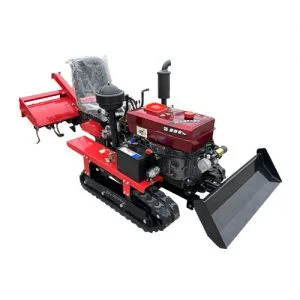
While Chinese tractors have transformed small-scale farming, they are not without challenges. Farmers may encounter several issues, including:
- Limited Technical Support: Many rural areas lack access to adequate training or technical support for repairs and maintenance. This can lead to prolonged downtimes and frustration, ultimately affecting productivity.
- Quality Variability: Not all manufacturers maintain consistent quality, leading to concerns about reliability. Farmers often have to navigate a landscape filled with varying levels of craftsmanship, making it essential to choose reputable brands carefully.
- Cultural Adaptation: In some regions, the shift from traditional farming practices to mechanized methods can face resistance from farmers who are accustomed to longstanding methods. Overcoming these cultural barriers requires education and demonstration of the benefits.
Conclusion
The introduction of Chinese tractors has undeniably transformed small-scale farming, making it more efficient, accessible, and sustainable. As technology continues to evolve, these tractors will likely play an even more significant role in shaping the future of agriculture. Farmers who adopt these machines not only increase their productivity but also enhance their resilience against the challenges of modern farming. The impact of Chinese tractors is profound, enabling farmers to thrive in an increasingly competitive agricultural landscape.
FAQ
Q:What are the average costs of Chinese tractors?
A:The average cost ranges from $5,000 to $15,000, making them a viable option for small-scale farmers who might struggle with the financial burden of more expensive machinery.
Q:Are Chinese tractors suitable for all types of farming?
A:Yes, Chinese tractors are designed to be versatile and can be adapted for various farming practices, including crop cultivation, livestock management, and more. Their adaptability ensures that they can meet the diverse needs of different farming operations.
Q:How do Chinese tractors compare in durability?
A:While many Chinese tractors are durable, the quality can vary by manufacturer. It’s essential for farmers to research and choose reputable brands to ensure they invest in reliable machinery that meets their needs.
Q:Can Chinese tractors help in sustainable farming?
A:Absolutely! Many models promote sustainable practices through features like fuel efficiency and soil preservation, allowing farmers to adopt more environmentally friendly approaches to their agricultural activities.

